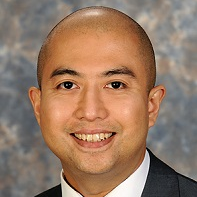Stroke in Ageing
A special issue of Geriatrics (ISSN 2308-3417).
Deadline for manuscript submissions: closed (30 April 2017) | Viewed by 70930
Special Issue Editor
Interests: health services research; dementia; cardiovascular diseases; healthy ageing
Special Issues, Collections and Topics in MDPI journals
Special Issue Information
Dear Colleagues,
Stroke is a common condition in older age; the majority of people who suffer stroke are over 65 years of age. Stroke in older people has a major impact on individuals, as well as their families and health economy. It remains one of the major causes of mortality and morbidity in this age group.
Ageing is associated with increasing physical and mental frailty. This is, in part, contributed by prevalence of co-morbid conditions in older age.
We are interested in publishing articles in a wide range of aspects on the impact of age on stroke and the impact of stroke on older people.
This Special Issue will cover a wide range of topics relevant to this topic from any research areas, from basic science to clinical trials.
We are particularly keen on highlighting novel and innovative approaches in the prevention, management, and rehabilitation (physical, as well as mental) in this patient population. This Special Issue will also focus on challenges we face globally in an increasingly ageing population.
Prof. Dr. Phyo Kyaw Myint
Guest Editor
Manuscript Submission Information
Manuscripts should be submitted online at www.mdpi.com by registering and logging in to this website. Once you are registered, click here to go to the submission form. Manuscripts can be submitted until the deadline. All submissions that pass pre-check are peer-reviewed. Accepted papers will be published continuously in the journal (as soon as accepted) and will be listed together on the special issue website. Research articles, review articles as well as short communications are invited. For planned papers, a title and short abstract (about 100 words) can be sent to the Editorial Office for announcement on this website.
Submitted manuscripts should not have been published previously, nor be under consideration for publication elsewhere (except conference proceedings papers). All manuscripts are thoroughly refereed through a single-blind peer-review process. A guide for authors and other relevant information for submission of manuscripts is available on the Instructions for Authors page. Geriatrics is an international peer-reviewed open access semimonthly journal published by MDPI.
Please visit the Instructions for Authors page before submitting a manuscript. The Article Processing Charge (APC) for publication in this open access journal is 1800 CHF (Swiss Francs). Submitted papers should be well formatted and use good English. Authors may use MDPI's English editing service prior to publication or during author revisions.
Keywords
- Novel risk factors
- Preventative strategies
- Acute management
- Rehabilitation
- Service delivery
- Care after stroke
- Psychological aspect
- Post stroke cognitive decline
- Social aspect
- Advances in management
- Short and longer term prognosis
- Palliative care






